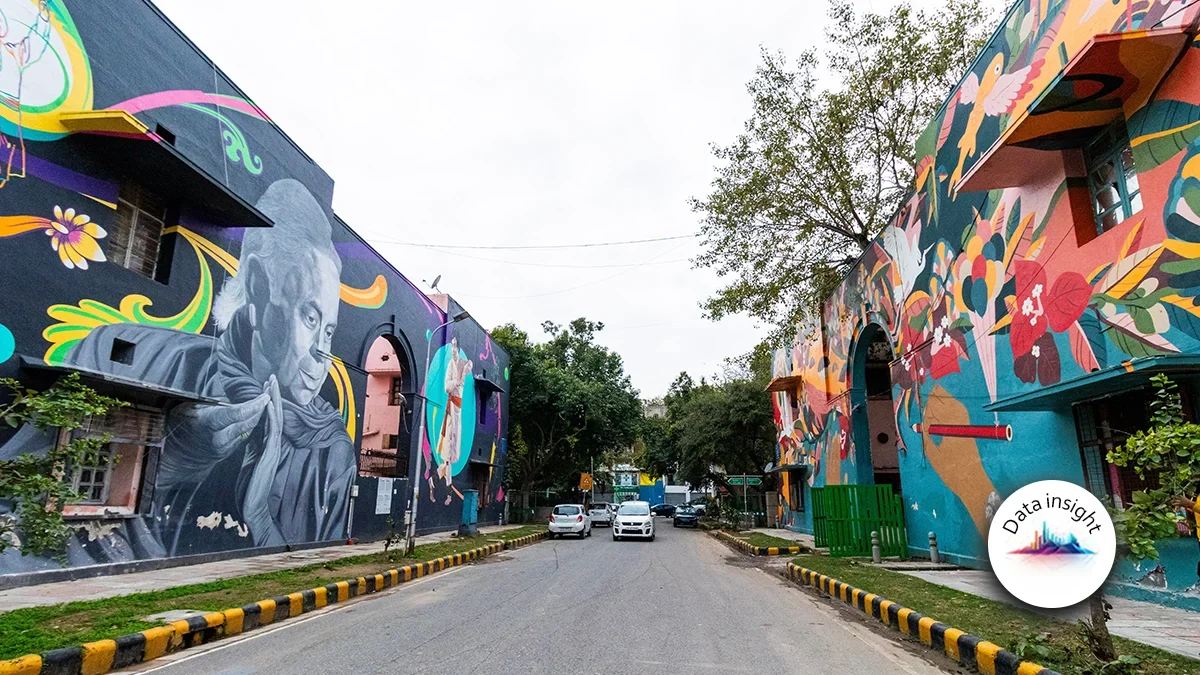• The 19th SIRC centred around a “global reset” to manage changes and challenges facing the industry.
• Marc Haushofer, SVP Asia Pacific at RenaissanceRe, emphasised some of these challenges: inflation, rising interest rates, economic depression, geopolitical tensions, and climate-related disasters.
• Key topics discussed included the need for better underwriting discipline, climate change, data deficiencies, digitalisation opportunities and risks, and changing workplace behaviour.
• The (re)insurance market is bracing for more rate increases in upcoming renewals.
• Benjamin Horton, a climate change scientist at EOS, was vocal that the industry is not fully embracing climate science and is insufficiently harnessing available data.
• Gen AI continues to be a key topic, though leaders cautioned against focusing on tech rather than practical applications and called for a better understanding of the technology.
The global insurance industry is changing and, in order to thrive, firms need to be prepared to embrace these changes. This was the core theme underpinning the region’s largest annual (re)insurance conference that took place this week.
During the four-day conference, an eclectic blend of topics were discussed, including the need for better underwriting discipline in the wake of a hardening market, climate change, data deficiencies, the opportunities and risks of digitalisation and shifting workplace behaviour.
There is plenty that the (re)insurance industry is going to have to grapple with in the months and years ahead. The 19th annual SIRC conference, which was branded under the theme of a “global reset”, made a valiant attempt to explore some of these issues.
“We are at the tip of a major insurance revolution and the SIRC allows us to innovate, expand, and record ourselves,” said Marc Haushofer – who was today announced as RenaissanceRe’s new SVP Asia Pacific and is also chair of Singapore Reinsurers’ Association (SRA). “The theme of this year’s conference, Reinsurance Reset, epitomises the key challenges that our industry is facing, and what needs to be done in the context of the prevailing uncertain and volatile risk landscape, illustrated by prominent inflation, rising interest rates, economic depression, geopolitical tensions, climate crime and increasingly frequent and costly climate-related disasters.”
Turning to the positive, Haushofer said that he welcomed a return to underwriting discipline following the years of weak performance that the industry has had to endure.
However, he ended with a warning: “I only hope such momentum will sustain for awhile.”
This underscored a view expressed by a number of participants on the sidelines of the conference: is underwriting performance, especially in Asia, going to continue to improve – or, once the pressure from rate increases subside, could primary insurers revert to the lax practices of the past six years?
Delivering the closing remarks, Kenrick Law, regional chief executive officer of Allianz Re and deputy chair of the SRA, emphasised the importance of finding solutions to some of the very challenging problems that were explored during the conference’s open panel sessions.
“During these times of uncertainty and volatility, it’s important to remember that insurance is more than just a financial transaction. It is also a promise of protection and support, to help society to continue to develop,” said Law. “I hope the dialogues over the past four days have provided you with key takeaways to ponder and to implement as we return to our teams next week.”
Underwriting discipline
As the global (re)insurance market heads into the January renewals, the entire industry is bracing for more rate increases.
This was a trajectory that began in earnest at the start of this year, with rates across the Asia Pacific region rising by as much as 20% in many areas.
This is a development that was broadly welcomed by the reinsurance industry, which for the past six years has been suffering from an environment in which they are barely able to meet their cost of capital. Now that the rate rises have started, the likes of Munich Re and Swiss Re – and many others – insist that they must continue.
“In our industry we’re clear that when we take on the risk, we have to charge an appropriate rate for that risk,” said Urs Baertschi, CEO of property and casualty reinsurance for Swiss Re, reflecting what has by now become a familiar postulation from global reinsurance players.
Rates will almost certainly continue to rise into next year, and most reinsurers hope that hardening market conditions will persist into the future too. This will help place the entire industry on a more sustainable footing.
The rate hiking cycle has already started to translate into better underwriting practices of primary insurers, as they look to improve profitably through more robust management of risk. Asia is a region that has been particularly prone to what Renaud Guidée, chief executive officer of reinsurance for AXA XL, describes as “more shaky structures”.
However, there remains some concern that the shift towards underwriting discipline could reverse. Many delegates that spoke to (Re)in Asia on the sidelines of the conference insisted that this mustn’t be allowed to happen, and that reinsurers must continue to exert pressure on cedents.
But there are some dangers on the horizon. One in particular – which was not openly discussed during the panel sessions but was very much on the mind of a number of delegates – is the impact that rising interest rates could have on this.
In many markets, insurers are now able to earn a risk-free rate of at least 5% on their fixed income investments. This takes some of the pressure off the profit that insurers have to earn through their core business.
“This could be potentially harmful for the industry if they take their focus off generating good technical underwriting profits,” said the regional CEO of one global reinsurer.
Climate change
Another key issue on everyone’s minds at SIRC was, as ever, climate change.
The panel discussion that dealt with this was one of the most lively of the entire conference, and saw an outspoken climate change scientist, Benjamin Horton from the Earth Observatory of Singapore [EOS], level damning criticism at the industry for failing to properly listen to researchers such as himself.
“When I gave a talk back in 2018 [at SIRC], I said that EOS is at the forefront of climate science. Did anyone email me afterwards to get involved with us? No. Then I went round all the major offices here in Southeast Asia and had some good conversations. I told [insurers] that they were using models that are out-of-date and are giving poor information to stakeholders. I invited them to come and work with EOS. Did anyone get back to me? No,” said Horton.
The point is, continued Horton, that insurers are not adequately embracing climate science and the data out there.
“You’re all supposed to be innovators. You’re all supposed to be at the forefront of your field,” he told the panel. “It’s up to you guys to come to us and say, ‘we need the latest information’.”
There was a tacit acknowledgement from the (re)insurers on the panel – Great Eastern, Allianz Re and Howden Specialty – that more should be done to improve the quality of climate change data and modelling within the industry, especially across parts of Asia where the data in use is often very patchy or skewed towards Western models. Indeed, Howden Specialty set up a dedicated Climate Risk and Resilience Team last year to address some of these challenges.
Horton’s feisty comments were clearly intended to provoke a reaction among his fellow panellists. He has made similarly strongly-worded points at other panels he has been at. But, such incitement aside, the remarks point to a very important issue that (re)insurers will have to get to grips with in the coming months and years.
This will be challenging, however, for an industry that is still very much wedded to the annual profit-and-loss account.
One broker told (Re)in Asia after the panel discussion that it is imperative that the industry as a whole moves beyond this and starts to take a longer-term view of climate change risks that are facing everyone, and are even threatening the very existence of certain nations such as Bangladesh.
Digitalisation
The other key theme that appeared during the four days of panel discussions was digitalisation. Here there should be little surprise that generative artificial intelligence – popularly known as ‘gen AI’ – featured quite prominently. Coincidentally, the SIRC event took place at the same time as the UK was hosting a global AI safety summit in Bletchley Park.
Gen AI clearly offers huge opportunities for (re)insurers, from more efficient processing of claims through to improving the accuracy of nat cat models, but there was a very clear sense during the panel session that the industry is still feeling its way around the topic.
“ChatGPT has obviously generated a lot of excitement around gen AI, but the danger is that when you become too excited you start thinking too much about the technology rather than what you can do with it,” said Lauren Liang, global head of growth and innovation for Swiss Re Reinsurance Solutions. “We see lots of questions across many organisations along the lines of, ‘what can we do with gen AI?’, and that’s the fastest way to get disappointed.”
Roopa Malhotra, head of customer and digital at Zurich Insurance Group, added: “The general understanding of modern gen AI is and what possibilities it brings is super critical.”
This is a key question that many within the (re)insurance industry will be trying to get their heads around in the coming months and years. Indeed many companies have been thinking about some of these issues for quite a while, even before the launch of ChatGPT created the hype that is now being seen across many different industries.
Malhotra said that there are two things in particular the industry is looking to use gen AI for right now. One is to improve the day-to-day efficiency of organisations – for example, by streamlining the processing of policy documents. The other is to improve the interpretation and presentation of data within certain business lines, such as nat cat modelling.
“I’m very positive about [gen AI],” concluded Malhotra. “My only kind of issue is that I think there needs to be more awareness around, and proper understanding of this technology. This is probably still at a fairly superficial level.”














